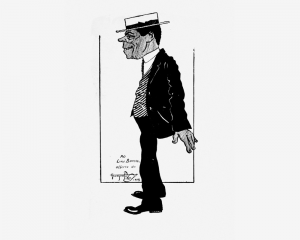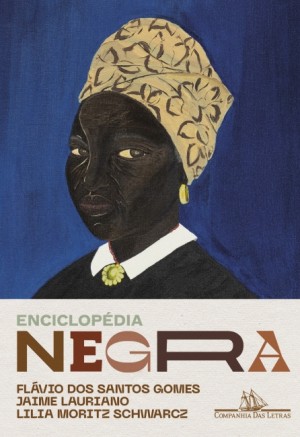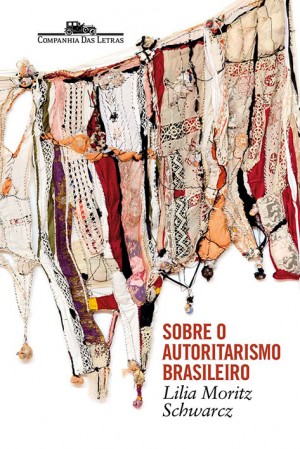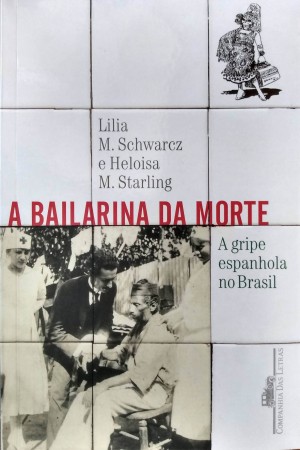Can Brazil fix its democracy?
On August 24 1954, Getúlio Vargas, Brazil’s president and the dominant figure in its politics for the previous two decades, was facing an ignominious end to his career. For a year, his government had been assailed by corruption allegations, and strikes had brought the country to a standstill. Even worse, one of his aides had been involved in an assassination attempt on a rival.
After most of his ministers pushed him to resign at an early meeting, Vargas did the one thing he could to outsmart the opponents he accused of orchestrating a coup: he retired to his room at the Catete Palace in Rio de Janeiro, lay down on the bed and put a pistol to the left side of his chest. He then pulled the trigger. It was 8.30 in the morning.
As Lilia Schwarcz and Heloisa Starling recount in Brazil: A Biography, their compelling and insightful history, “the country went mad”. Crowds vented their fury in many of the main cities with stones and clubs. In Rio, a mob attacked anything that had to do with the opposition and its perceived allies — including the offices of Standard Oil and the American embassy. Around a million people gathered in front of the presidential palace in the hope of seeing the body.
In case political tensions were not high enough, Vargas left behind a self-pitying suicide note in which he blamed his death on everyone he believed to be against his development programme, from the opposition to foreign business. “If the birds of prey want someone’s blood, if they want to continue sucking the Brazilian people’s, I offer my own life in sacrifice,” he wrote.
With their mixture of melodrama, violence, cronyism and politics-as-personality, the last days of Vargas highlight the central narrative of Schwarcz and Starling’s history — the stuttering, fragile and incomplete effort to construct a robust Brazilian state that can deliver stable politics and the protection of basic rights.
In their telling, Brazil has not developed the values needed to sustaín an effectíve republíc that can weed out corruptíon. Instead of ímpersonal government, Schwarcz and Starlíng chronícle an endless cycle of "ímmedíatísm [that] takes the place of planning substantive, long-term changes”. Brazil, they write, has often been a “country on the lookout for the daily miracle, or some unexpected saviour”.
A decade or so ago, such a note of pessimism would have seemed out of place. Not only was Brazil growing at a rapid clip, but its democracy seemed to have built solid foundations. Power had been passed seamlessly from one democratically elected government to another, from Fernando Henrique Cardoso to Luiz Inácio Lula da Silva. A durable consensus also appeared to have developed around the core ideas of governance — a conviction that stable public finances are not the enemy of ambitious social policy but the necessary starting point.
Yet after several years of overlapping political and economic crises, Brazilian democracy is fraying in ways that echo many of the patterns Schwarcz and Starling describe, especially from the last century. The current mood is more dejected and the politics more fractious than at any time since elections were restored in 1985. The once-feted Lula da Silva is in prison after being convicted of corruption — a legal predicament he has even tried to hint could be the work of the US. Much of what goes for the political centre has also been decimated by graft accusations.
The latest polls suggest that the presidential election in October could end up as a run- off between Jair Bolsonaro, a tropical Trump who talks wistfully about the torture- filled military dictatorship that started in 1964, and Ciro Gomes, a leftwing candidate whose truculent personality and elastic economic logic have many of the hallmarks of a new populist adventure.
Brazilian capitalism still depends too little on innovation and too much on political connections
Schwarcz and Starling’s blunt conclusion that “although democracy has moved forward, the Republic has stayed on the drawing board” — written when the book was originally published in Brazil in 2015 — seems almost too upbeat in the current climate.
In its timeframe, Brazil: A Biography is nothing if not conventional. It spans the 500 or so years from when Pedro Alvares Cabral, a minor Portuguese aristocrat, landed in 1500 in what is now Bahia in Brazil’s north-east, to Cardoso’s comfortable election victory in 1994 on the back of an inflation-busting economic plan.
But what marks it out from other histories of Brazil is the way it mixes the public and the private, the well-trodden and the obscure. It moves effortlessly from the high politics of the Portuguese court fleeing Napoleon in 1807 to install itself in a disease- ridden Rio “that looked like an African coastal town”, as one observer described it, to the myriad micro-rebellions against slavery that marked the 17th and 18th centuries. Schwarcz, in particular, who divides her time between São Paulo university and Princeton, has been a pioneer in drawing out often-neglected aspects of Brazil’s slave- owning past.
In describing the “tortuous process of building citizenship”, Schwarcz and Starling tell two inter-related stories — the often stumbling efforts to establish durable political institutions, especially after the end of monarchy in 1889, and the way that race and racial identity have changed over time in the country that received more slaves from Africa than any other.
Schwarcz and Starling write that one of the keys to understanding Brazilian politics and the pervasiveness of corruption is what they call “familyism”, in which important politicians are known by their first name — Getúlio! Lula! — and treated as if they were a relative, rather than judged by their commitment to the public good. They endorse the historian Sérgio Buarque de Holanda’s famous description of the Brazilian “cordial man”, not as the compliment the phrase has sometimes been interpreted as being, but as a criticism of “the precedence of affection and emotion over the rigorous impersonality of principles that organise society”.
These contradictions are nowhere more evident than in the era of Getúlio Vargas from the 1930s and to the early 1950s — which still profoundly mark Brazil today in positive and negative ways and provide some of the most engaging chapters in the book.
Vargas was not only the most important figure in 20th-century Brazil, but also one of the most ambiguous. The era saw Brazil’s first major strides towards urbanisation and industrialisation and Vargas introduced some of the first social protections, including working day limits, sick leave and pensions. To this day, he is admired by some on the left.
Yet he ruled at times as a dictator, especially during the Estado Novo period from 1937 to 1945. He also openly admired many of the ideas and liturgy of European fascism, including the organisation of society through major interest groups, the exaltation of nationalism and the primacy of a dominant leader. Schwarcz and Starling describe the Estado Novo regime as “authoritarian, modernising and pragmatic”. They also note the more disparaging contemporary verdict of the writer Graciliano Ramos, who called it, referring to one of the main indigenous peoples, “our tiny little Tupinambá fascism”.
Most of all, the Vargas era cemented in the Brazilian political DNA a brand of corporatism that encourages an often cosy co-operation between the state and big business. Success in Brazilian capitalism still depends too little on innovation and too much on political connections.
Race provides the other spine of the book. Brazil, which received as many as 40 per cent of the slaves brought from Africa, was the last country in the western hemisphere to abolish slavery in 1888. The authors are unsparing in their descriptions of the violence and cruelty — at 25, the life expectancy of Brazilian slaves was even lower than the 35 years in the US. On one estate in Bahia they examine, five new slaves were purchased a year because of “the constant deaths”.
One of Schwarcz and Starling’s great strengths is their dissection of changing racial identity. Again, the 1930s proved to be a major turning point. As the society and culture modernised, Brazil embraced elements of a mixed-race identity. With radio taking off, samba and its Afro-Brazilian rhythms became the national music, and carnival the national holiday. In the propaganda of the Estado Novo, “being of mixed race was no longer seen as a disadvantage, but rather to be celebrated”.
Up to a point. Schwarcz and Starling describe the proliferation of biological theories in the early 20th century that tried to demonstrate the inferiority of blacks and mestizos, or their likely disappearance. The brutal barriers of slavery were replaced with more subtle distinctions.
“After abolition, black people were treated with a kind of silent and perverse prejudice . . . based as it was on a hierarchy constructed according to gradations of colour,” they write. Or as a popular saying from the years after abolition went: “Freedom might be black, but equality is white.”
Schwarcz and Starling’s conclusions are by no means downbeat. On race, they believe the country has turned a corner, part of a broader “civil rights” movement they identify that is pushing for greater equality. Yet they also note that “outrage” at the growth of corruption in recent years could “lead to a loss in credibility of the democratic institutions”. That question will be the sub-plot of this October’s elections.
Brazil: A Biography, by Heloisa Starling and Lilia Schwarcz, Allen Lane, 800 pages
[Geoff Dyer is the FT’s analysis editor and a former São Paulo bureau chief]
























